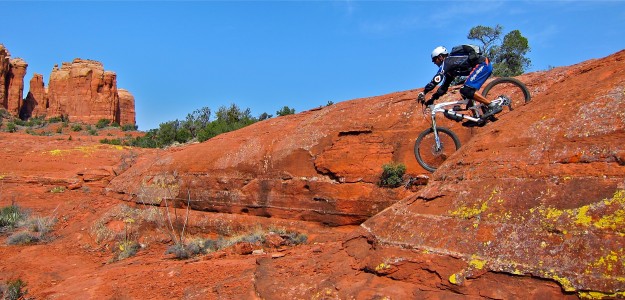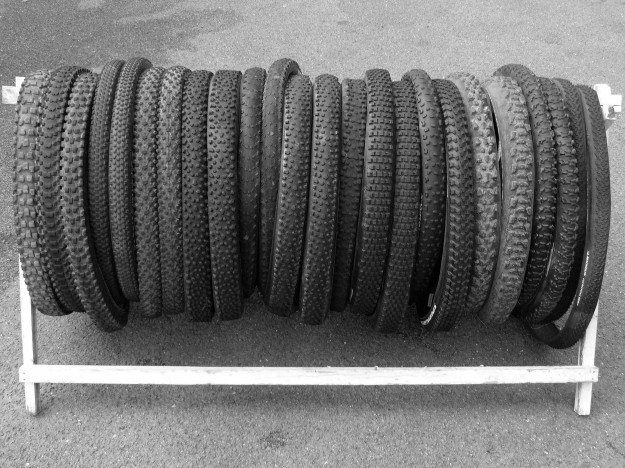
Your essential guide to choosing mountain bike tyres
With such a vast choice of tyres out there, it’s no wonder that so many questions start ‘What tyres for…’ In this guide, we’ll explain the features of modern tyres to help you choose the right rubber.
There’s a saying about gear and the weather: ‘there’s no such thing as bad weather – just the wrong choice of clothing’.
The same is true of tyres. We often fit the wrong ones. Most of us want to fit tyres that work on every surface, then we curse the bike, or tyres, when things go awry. We travel miles to get to a bike park in Wales or Scotland only to find that our super sticky mud tyres are pretty much useless on the rocky descents and climbs.
What do we do? Do we buy a set of tyres for each location (having learnt our expensive lesson) or do we go for the compromise? This can be a daunting task.
Whether you’re riding a 26in-wheeled bike or a 29er, or going tubeless, it’s the grip that matters. Our essential guide to cross country tyres is here to help you through the mire.
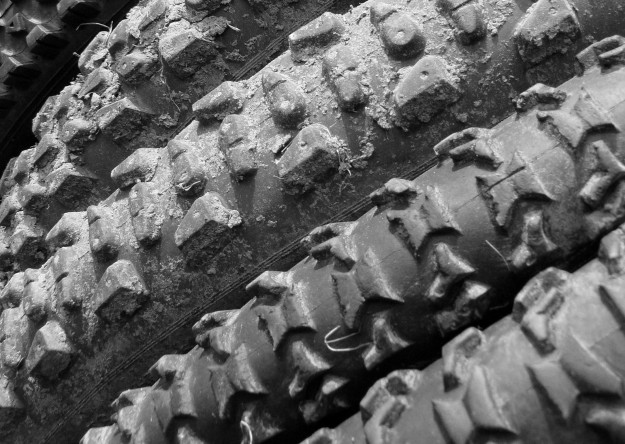
Where do you ride?
Tyre selection is probably one of the hardest of choices to make when fitting out your bike and by and far the greatest influence on the quality of your ride and handling of the bike. The weather conditions here on our compact island constantly change with the seasons and more often than not – four seasons in one day.
Whether you live in the north, south, east or west, you just don’t have the luxury of simplicity with terrain and weather. Almost anywhere within the UK you might encounter mud, sand, rocks, roots, tarmac, and grass. Sometimes, that’ll be in a single ride, or in some cases just a few hundred metres. If you want to take the fit and forget route with your tyres, then compromise might ultimately be the name of the game.
Tyre construction: threads per inch (TPI)
As the name suggests TPI refers to the thread count in a tyre’s casing. A low TPI means the manufacturer has used thicker threads to weave the tyre casing, making it more durable, but stifer. High TPI indicates thinner threads, making the tyre lighter and more pliable.
Tyre construction: Siping
Sipes are the small incisions on, or in, a tyre tread, usually in the knobs. Siping a tyres creates more working edges, boosting traction on pretty much any surface. Shallow cut sipes stay firmer under heavy loads and hard braking.
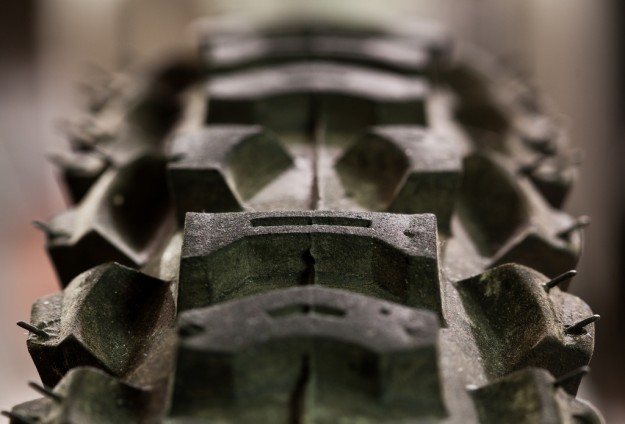
Tyre construction: Terraced treads
Tyres that feature stepped edges on the tread offer a progressive feel as you turn into a corner. The idea here is that in the initial stages of a turn the tread is supple and conforms to the terrain, as more pressure is applied at the apex of the turn, the tread becomes stiffer to provide support.
Tyre profiles
There are two general types of tyre profile: rounded and square. Rounded profiles normally offer less rolling resistance so are better for going quickly, but they offer less grip as less of the tyre is in contact with the ground. Less grip is available while cornering too, as the tread patterns on the outside of the tyre normally the same as the centre sections.
A square profile normally supports a more aggressive tread pattern offering plenty of grip but with the disadvantage of higher rolling resistance, especially on smooth, hard packed surfaces. There’s usually plenty of cornering grip on offer as the more aggressive tread pattern bites into the terrain. The combination of speed and grip comes at a price, though.
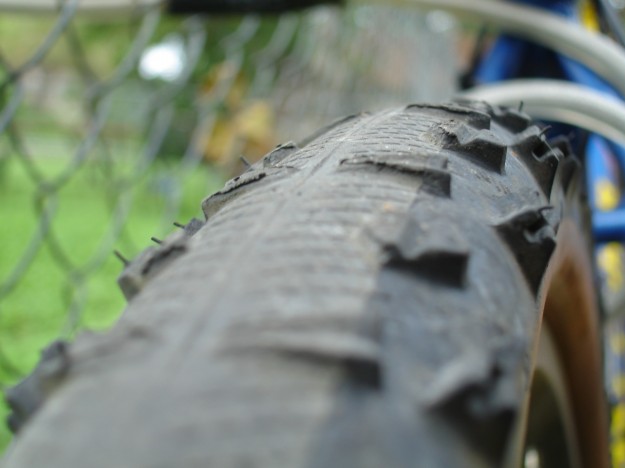
Tyre manufacturers have been working hard on improving the all-round performance of cross-country tyres. More and more tyres are appearing built of two, sometimes three different layers of tread compound. The mix of harder and softer compounds enables tyres to roll and corner better, giving you the best of both worlds for a wider range of riding conditions.
Grip, braking, inertia & rolling resistance
The wheels and tyres on your mountain bike are the components that have to be turned, so it’s only natural to want this to happen as easily as possible. But here’s the problem: we want maximum grip combined with a light wheel/tyre combination that’s easy to rotate, especially when the going gets tough.
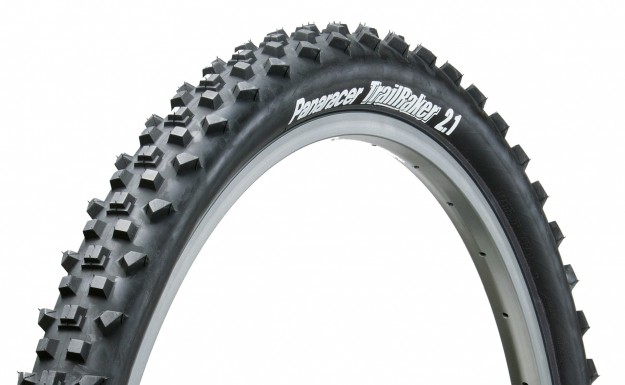
We need grip to stay upright and to propel ourselves forwards when it’s slippery, and we need the tyre to grip in the opposite direction for maximum braking effect. Fitting those new disc brakes will amount to nothing if there’s nothing to bite into the ground.
The lighter the tyre, the lower its inertia and the easier it is to turn the wheel. Lightweight tyres tend to have thinner side walls to reduce this, which is great for weight saving but not so good for preventing pinch flats.
Rolling resistance is the force needed to actually push the tyre along the ground. Tyres with minimal tread blocks have low rolling resistance, so will be quicker over hard packed ground than a more aggressive tread pattern but usually don’t offer much grip on loose surfaces. This becomes a problem when you hit soft or muddy conditions where the tyre can’t dig in and provide grip. That’s not a disaster for a few metres, but you will soon get fed up with the lack of grip if your frequently ride though mud or soft, wet ground.
The ultimate in low rolling resistance is the slick road tyre, but they’re not much use off-road unless you are riding clean, dry rocks.
Tyre manufacturers have to trade off these four attributes as it’s impossible to make a tyre that is light, grippy in all situations and fast-rolling.
Mud shedding
A tyre with an open tread pattern, with large gaps between the blocks, will cut through the mud and normally clear it easier than a close block pattern.
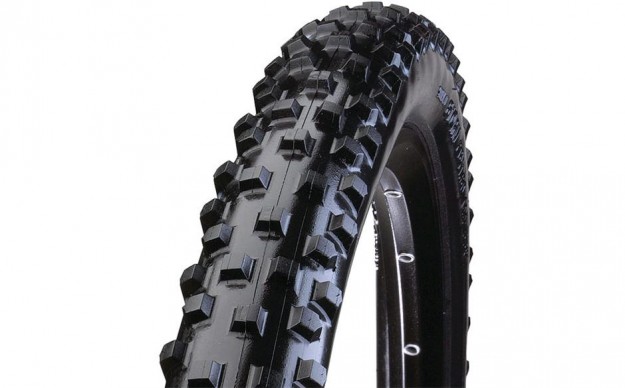
This is because the mud has little purchase as there are fewer blocks of rubber to get packed between, and the blocks tend to give a little (that squishy feeling) allowing the mud to fall out. Good mud tyres usually have blocks with sloping sides to help drop the dirt.
Cross-country race tyres
Racing is all about going as fast as possible and we spare no expense to do this. Race tyres generally fall into two categories: as little tread as possible or a full-on mud pattern. Why? Because a narrow tyre with smaller and tighter tread pattern for dry conditions offers much less rolling resistance.
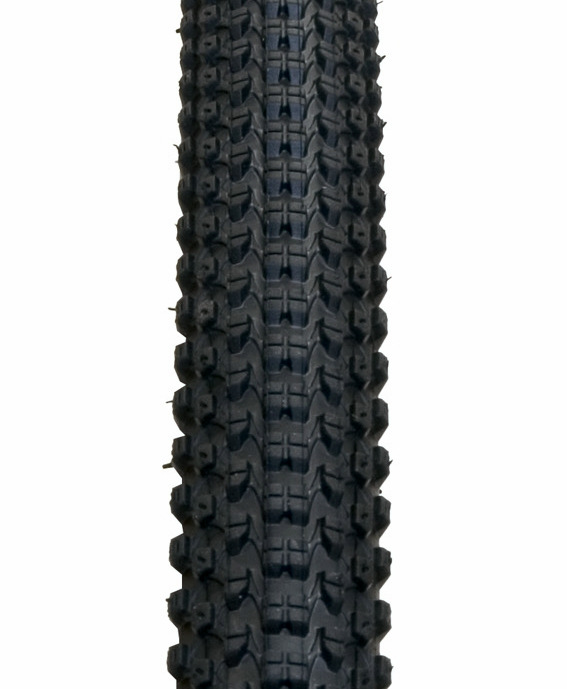
Narrow (around 1.7in), aggressive mud tyres are found almost exclusively on the racing circuit but these are tyres that will cut right through the crud and still offer up acres of grip. Only thing is, narrow tyres don’t offer much cushioning. Remember, racing is all about going as fast as you can for a few hours. If you are racing over larger distance then you need to look at a bigger tyre for better cushioning.
Having said all that, if you ride in an area that makes you live in fear of clogging up your bike during the wet seasons (horrible wet chalk or clay, muddy going etc) then a narrow, mud-specific tyre will certainly help you cope.
Rider weight
Remember that lightweight tyres usually have thinner walls? Well, if you’re a big unit then you might want to look at something with stiffer side walls to reduce the chances of pinch flats. This is going to add rotational weight of course, but there’s the compromise again.
Cost
Less is more. Expect to pay a premium for lightweight folding tyres. If you are on a budget then look for tyres with cheaper wire beads that have the same tread as your preferred lightweight option. The difference is only a couple dozen grams, which might matter to a racer, but is not vital for general riding. [As pointed out in the comments below, the difference can be around 100g, so if weight matters to you, then folding tyres make sense. – Ed]
Setting up and looking after your tyres
Check to see whether your tyres are directional; or even if they are front or rear specific. Some tyres might have tread blocks with chamfered leading edges on the front tyre for less rolling resistance, with a square block pattern at the rear for grip.
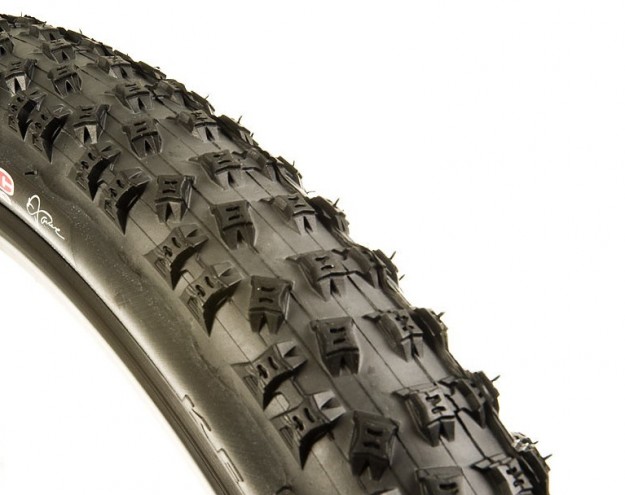
There will be an arrow on the side walls indicating the direction of travel. The side walls should also be marked with the minimum and maximum tyre pressure. Inflate them to a pressure somewhere between the two unless you are certain you know what you’re doing.
Rider weight, ride conditions, and terrain will all play their part in how much air you put in your tyres. Too little pressure will make the tyre slow, and increase the chance of pinch flats. Too much pressure will reduce traction as there will be less tread in contact with the ground. Rolling resistance will be lower for sure, but the ride will be harsher. You’re less likely to get a pinch flat though.
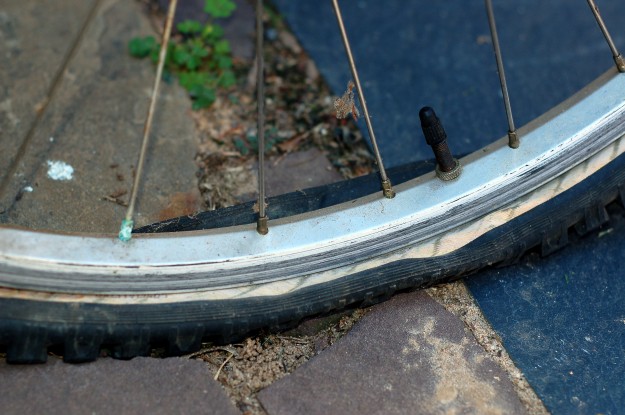
It’s worth buying a floor pump with a good gauge or even a separate gauge so you can experiment with pressure. As little at 2 or 3 psi can make a difference to the ride and performance.
Conclusion
It’s worth putting some thought into your tyre selection, especially if you are serious about your mountain biking. A great place to start is to read the tyre reviews here at Bikemagic, look at what your fellow riders are using; watch and see how they get on, or talk to your local specialist bike shop. There are plenty of great tyres out there these days and the choice seems to grow by the day.
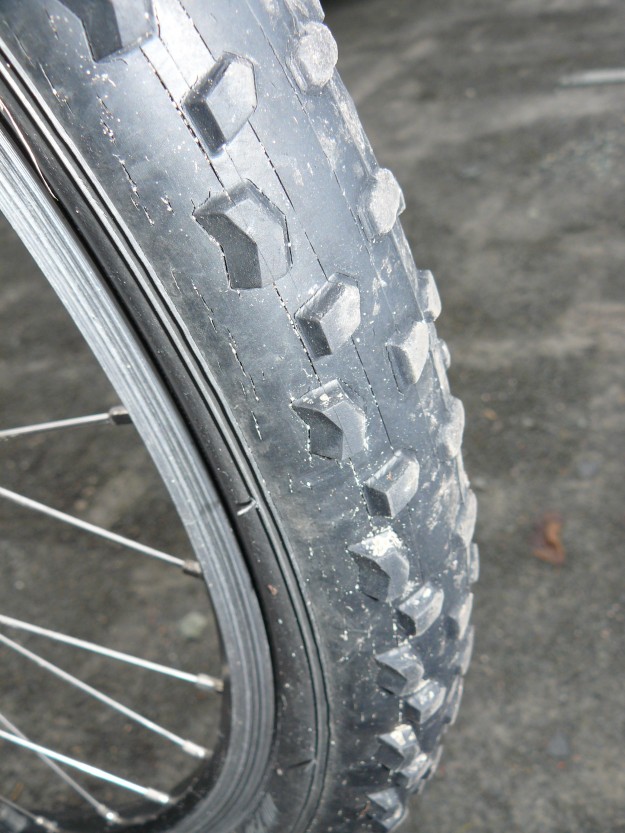
When you do find that one special tyre that does it all for you we suggest grabbing a couple or three pairs. Tyre makers have a bad habit of treating tyres as fashion items and dropping perfectly good tyres from the range.
